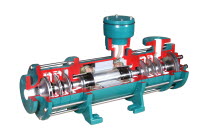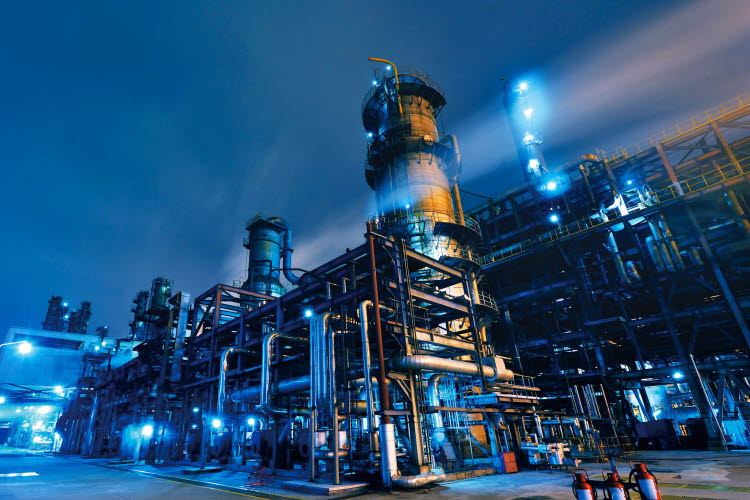This energy can be saved by implementing Liquid Pressure Amplification (LPA), whereby a leak-free pump is installed in the outlet line of the condenser after the liquid receiver, and this approach is being promoted by the Carbon Trust. The pump provides the stable pressure needed for the expansion valve and allows the condensing pressure (and hence, the compressor delivery pressure) to ‘float’ with the ambient pressure. The Carbon Trust does point out that the LPA pump does require energy to operate, but the costs are far outweighed by the savings from the compressor.
A leak-free pump is essential in order to prevent refrigerant gas from escaping, and this can be achieved by using canned motor pump (CMP). Canned motor pumps are characterised by their compact and integrated design, with the motor and pump forming a single unit with the rotor and impeller fitted on to a common shaft. The rotor is guided by two slide bearings and the drive motor stator is separated from the rotor using a cylindrical metal can. The rotor compartment, together with the hydraulic section of the pump, is filled with the pumped medium during operation. The heat loss from the motor is carried off by a partial flow between the motor and stator, and the flow also lubricates both slide bearings in the rotor compartment. The can, which is a hermetically sealed component, and the motor casing offer primary and secondary containment. It is this, together with the compact design and low noise level, which differentiates the CMP from the magnetically coupled pump. The double containment design makes the CMP one hundred percent leak free, and even in the unlikely event of a stator line rupturing there is no leakage to atmosphere. These factors make the CMP ideally suited to the safe handling of refrigerants, hazardous and volatile organic compounds particularly where high working pressures are encountered.
Magnetic drive pumps do offer high levels of liquid and vapour containment and are a highly effective solution for a great many challenging applications. Mechanical sealing with loop systems can also provide leak-free service, but the total cost for installation and maintenance is far higher. However, where 100% emission-free operation is demanded, as is the case in refrigerant plant the double containment provided by the CMP is the only solution.


AxFlow’s Hermetic CNF and CAM refrigerant pumps have been developed to handle all refrigeration liquid gases, and in particular R717 (NH3), R22, CO2, R134a, R404a, R11, R12, Baysilone (M3,M5), Methanol, Silicon oil KT3, Syltherm and Lithium. The pumps are of mono-bloc design (pump and motor share a common shaft) and as such are quieter, more compact, and easier to install than conventional and magnetic-drive pumps. This is particularly apt when retrofitting them to existing refrigeration plant. Furthermore, they do not require base-plate, coupling or coupling guard, nor is there a need to align the motor and pump to ensure total leak- free operation.
Having been manufacturing canned motor pumps for over 50 years, Hermetic has a wealth of experience in supplying equipment for refrigerant applications. As a result, is has a considerable volume of data relating to absorbed power and other issue of relevance to the Carbon Trust’s LPA initiative.


